Disclosure: This article contains affiliate links. We may earn a commission from purchases at no extra cost to you, which helps our travel content.
As someone who spends her professional life creating order from chaos, there's something deeply satisfying about the structured beauty of Arizona's desert landscapes. The geometric precision of cacti silhouetted against watercolor sunsets, the methodical layering of sedimentary rock formations, and the carefully evolved ecosystem that thrives in Mesa's arid climate – it all speaks to my organizer's soul. Last fall, while extending a business trip organizing an executive retreat in Phoenix, I discovered Mesa's network of trails offers the perfect balance of accessibility and adventure. Whether you're a solo traveler seeking solitude or looking to maximize a quick weekend escape, these ten hikes deliver breathtaking views, fascinating desert ecology, and that rare sense of both freedom and focus that only nature provides. Each trail has been meticulously researched and personally tested, because if there's one thing I've learned from years of professional organizing and travel planning – efficiency matters, especially when you've got limited time to experience something extraordinary.
Lost Dutchman State Park: Treasure Loop Trail
The Superstition Mountains have long captivated visitors with legends of hidden gold, but the real treasure here is the 2.4-mile Treasure Loop Trail that offers spectacular views without demanding extreme fitness. During my visit last October, I arrived at sunrise (a professional organizer's habit of maximizing daylight) and was rewarded with the Superstition Mountain's dramatic façade glowing amber in the morning light.
The trail begins with a gentle ascent through classic Sonoran Desert landscape, where saguaro cacti stand like sentinels against the sky. About halfway through, you'll reach a natural viewpoint that frames the valley floor perfectly – an ideal spot for contemplation or photography. The trail is exceptionally well-marked, a detail I particularly appreciate as someone who values efficiency in navigation.
I found myself completely alone for the first hour, with only the occasional jackrabbit and cactus wren for company. The silence was profound – a rare commodity in our hyper-connected world. By the time I completed the loop, the day's heat was just beginning to build, and I was grateful for my early start and the hydration pack that kept me properly hydrated without having to stop and fumble with water bottles.
For those interested in the area's history, the park's visitor center offers excellent exhibits on the legendary Lost Dutchman's gold mine and the geological forces that shaped this striking landscape.

💡 Pro Tips
- Start early (before 8 AM) to avoid heat and crowds
- The park entrance fee is $7 per vehicle – bring exact cash
- Look for the rare crested saguaro cactus about halfway through the loop
Usery Mountain Regional Park: Wind Cave Trail
If you're seeking the perfect balance between challenge and accessibility, Wind Cave Trail delivers with its 3.2-mile round-trip journey to a fascinating geological feature. The trail gradually ascends 800 feet along the eastern edge of Pass Mountain, offering increasingly expansive views of the valley below.
What makes this hike particularly special is the microclimate created at the wind cave itself – a concave depression in the mountain face where cooler air circulates, supporting unique plant life not found elsewhere on the trail. During my hike last November, the temperature dropped noticeably as I approached the cave, a welcome respite from the desert heat.
The trail's surface changes dramatically as you ascend – starting with packed earth and transitioning to more technical rocky sections near the top. I was thankful for my hiking boots which provided the ankle support and grip needed for the varied terrain.
As a professional organizer, I appreciate how well this trail maximizes the experience-to-effort ratio. In just under two hours of moderate hiking, you're rewarded with panoramic views of the entire East Valley, from the Goldfield Mountains to the distant Phoenix skyline. The geological storytelling is exceptional too – each layer of rock represents millions of years of Earth's history, organized in visible strata that satisfy my love for natural classification systems.
I timed my descent to coincide with the golden hour, when the valley below was bathed in warm light and the shadows created dramatic contrasts across the desert floor. If you're a photography enthusiast, this timing is absolutely worth planning for.
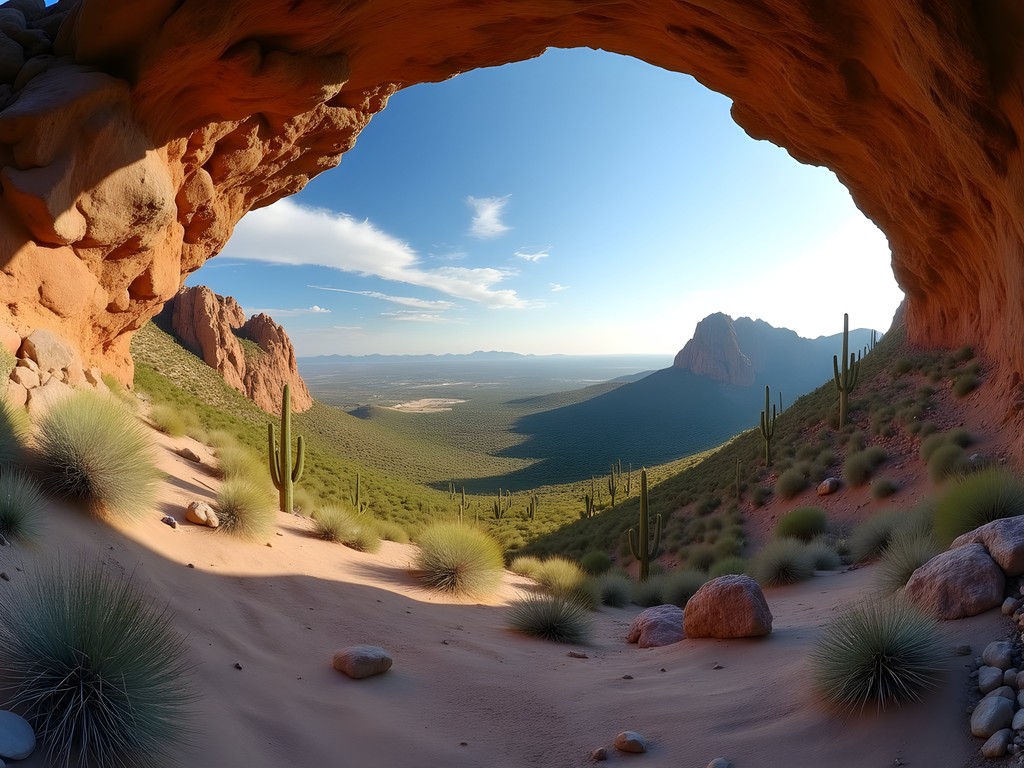
💡 Pro Tips
- The wind cave faces east, so afternoon visits offer shade and better photography lighting
- Bring binoculars to spot desert wildlife and distant landmarks
- The park's entrance fee ($7) is well worth it for the well-maintained facilities
San Tan Mountain Regional Park: Goldmine Trail
Some trails reveal their character gradually, and the Goldmine Trail is a perfect example of this slow-burning charm. Located in the less-frequented San Tan Mountain Regional Park, this 4.5-mile loop offers a quieter desert experience than some of Mesa's more popular hiking destinations.
What struck me immediately was the diversity of cacti along this route. Beyond the iconic saguaros, you'll encounter teddy bear cholla, barrel cacti, and my personal favorite – the ocotillo, which resembles a bouquet of slender stems reaching skyward. During my hike last October, many were crowned with brilliant red blooms, adding vibrant color to the desert palette.
The trail's name comes from an actual historic gold mining operation, and attentive hikers can spot evidence of this industrial past about halfway through the loop. I found myself fascinated by the resilience of nature reclaiming these human interventions – a reminder that our organizational systems are always temporary in the grand scheme of things.
The highlight comes at the trail's highest point, where a natural rock formation creates a perfect resting spot with 360-degree views. I spent nearly an hour here, organizing my thoughts in my travel journal, sketching the landscape, and enjoying the solitude that's increasingly rare in our connected world.
What makes Goldmine Trail particularly suitable for solo travelers is its moderate traffic – enough people that you don't feel isolated from a safety perspective, but sparse enough that you can enjoy extended periods of solitude and reflection. The trail is also exceptionally well-marked with frequent directional signs, making navigation straightforward even for those hiking alone.
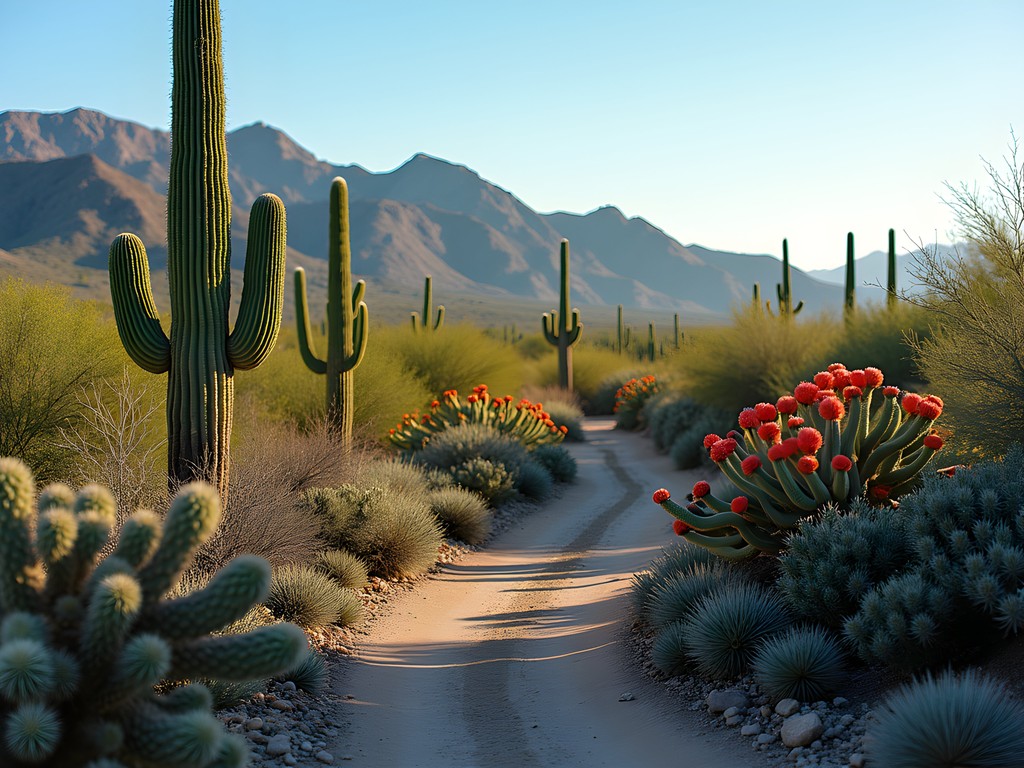
💡 Pro Tips
- The park entrance is less obvious than others – use GPS coordinates rather than the park name
- Bring polarized sunglasses to fully appreciate the mineral variations in the rock formations
- Check at the visitor center for information about seasonal wildflower blooms
Hawes Trail System: Ridge Line Trail
For intermediate hikers seeking a more technical experience, the Ridge Line Trail in the Hawes Trail System delivers both challenge and reward. Unlike the more developed parks, this network of trails on the northeastern edge of Mesa offers a rawer desert experience with fewer facilities but more adventure.
The Ridge Line Trail stretches approximately 4.8 miles along an elevated ridge of the Usery Mountains, providing continuous panoramic views that shift with every turn. What makes this trail particularly special is how it balances on the literal edge between wilderness and civilization – to one side stretches the undeveloped desert, while the other offers views of Mesa's urban landscape.
As someone who appreciates efficient systems, I was impressed by how this trail maximizes elevation gain through thoughtful routing rather than punishing climbs. The path undulates along the natural contours of the ridge, creating a rhythm of effort and recovery that feels sustainable even in the desert heat.
The trail surface here is primarily decomposed granite and rocky outcroppings, requiring more attention to foot placement than some of Mesa's more manicured paths. My trekking poles proved invaluable for maintaining balance on the occasional loose sections, especially during steep descents.
What truly distinguishes Ridge Line is the sense of immersion in the landscape. Without the infrastructure of state parks, you experience the desert in a more intimate way – from the subtle variations in rock coloration to the surprising diversity of desert plants adapting to microclimates along the ridge.
During my solo hike, I encountered several red-tailed hawks riding thermals along the ridge – a mesmerizing display of efficiency in motion that had me stopping repeatedly to watch their graceful navigation of invisible air currents.
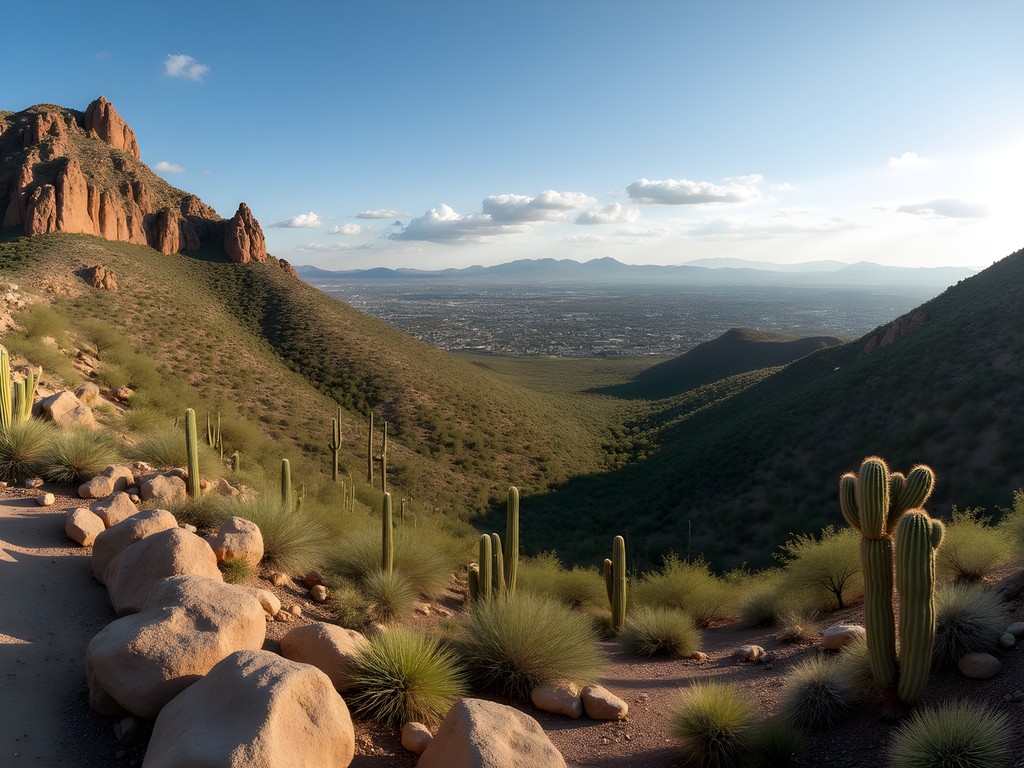
💡 Pro Tips
- There's limited parking at the trailhead – arrive early or on weekdays
- No facilities are available, so bring all necessary water and supplies
- Download the trail map before you go as cell service can be spotty
Usery Mountain: Pass Mountain Trail
When I need to clear my mind and reset my organizational thinking, I seek out loop trails that offer a complete journey rather than an out-and-back experience. The Pass Mountain Trail delivers this perfectly with its 7.4-mile circuit around the mountain that shares its name.
What makes this trail special is how it showcases the desert's surprising diversity. The north face of Pass Mountain harbors significantly different plant communities than the south face – a textbook example of how exposure and microclimate shape ecosystems. As someone who appreciates efficient natural systems, I found this variation fascinating.
The trail begins with a moderate climb through classic Sonoran Desert landscape, with saguaros and palo verde trees dominating the scene. As you curve around to the mountain's north side, the environment shifts dramatically – more moisture-loving plants appear, and the temperature can drop several degrees. This natural organization of plant life based on environmental factors resonates with my professional perspective on creating functional systems.
About halfway through the loop, the trail offers spectacular views of Four Peaks and the Superstition Mountains in the distance. I found a perfectly positioned boulder for a lunch break and spent nearly an hour absorbing the panorama while refueling with trail snacks I had meticulously packed in my hiking daypack – which has brilliantly designed compartments that keep everything accessible without unpacking.
The western portion of the loop provides views of Mesa and the greater Phoenix area, creating a satisfying contrast between wilderness and civilization. I completed the hike just before sunset, when the city lights began to twinkle in the distance while the desert was bathed in that magical golden hour light photographers chase.
What makes Pass Mountain ideal for solo hikers is its moderate popularity – you're never completely alone (a safety consideration), but the trail rarely feels crowded. The clearly marked path and reasonable difficulty level make it accessible for intermediate hikers looking for a substantial but not overwhelming challenge.
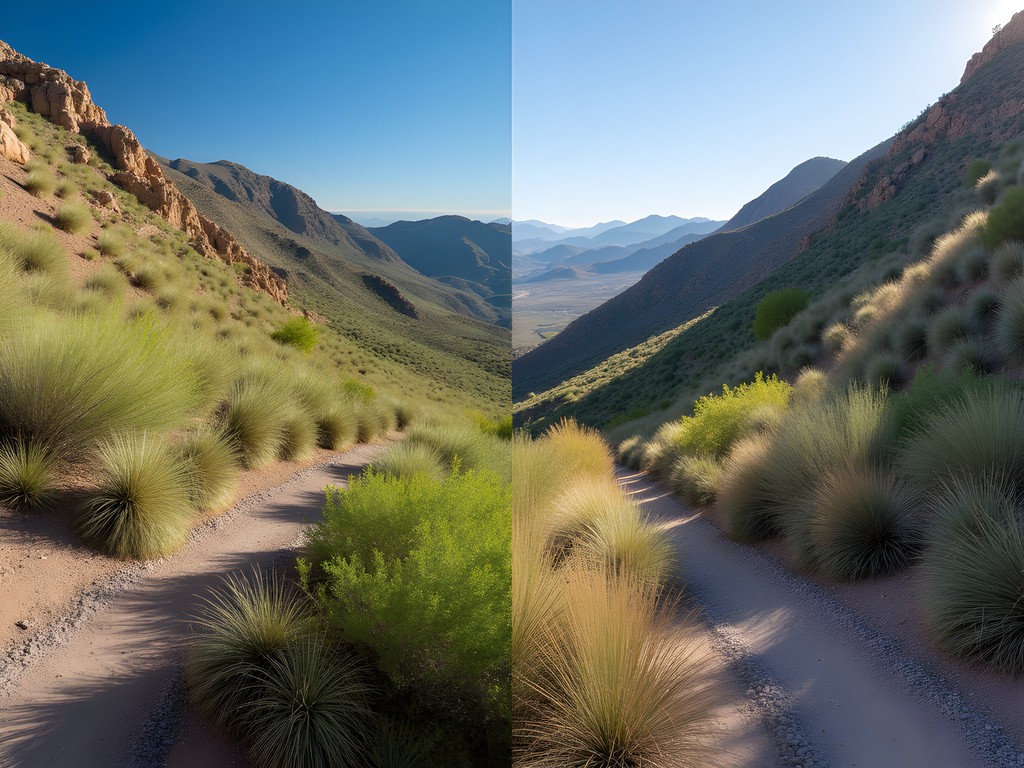
💡 Pro Tips
- Allow 4-5 hours to complete the full loop at a comfortable pace
- The north side offers welcome shade during midday heat
- Bring a wide-brimmed hat as much of the trail offers limited shade
Siphon Draw to Flatiron Summit
I'm a firm believer in pushing boundaries – in business and in nature – which is why I've saved the most challenging hike for last. The Siphon Draw to Flatiron Summit trail is not for casual hikers, but for those with experience and determination, it delivers an experience that transcends the ordinary.
Beginning at the Lost Dutchman State Park, this 6-mile round-trip trail gains over 2,700 feet in elevation, much of it in steep, rocky sections that require careful navigation and occasional hand-over-foot scrambling. The trail begins innocuously enough on the well-maintained Siphon Draw Trail, but soon transitions into a more primitive path as it enters the dramatic canyon that gives the trail its name.
What makes this hike exceptional is the dramatic transformation of landscapes as you ascend. The journey begins in classic Sonoran Desert surroundings, transitions through a remarkable slickrock basin (the 'draw' itself), continues up increasingly steep terrain, and culminates at the massive Flatiron summit – a plateau that seems to have been cleaved from the mountain with a giant axe.
During my ascent last fall, I encountered several points where the trail required problem-solving rather than simple following – a mental exercise I found invigorating. The final approach to the summit involves navigating a near-vertical chute that demands concentration and proper technique. My hiking gloves proved essential for gripping the rough rock surfaces without abrasion – a small investment that significantly enhanced both safety and comfort.
The summit itself is otherworldly – a massive flat expanse of rock with 360-degree views that extend to distant mountain ranges on clear days. I spent nearly two hours exploring the summit plateau, finding quiet corners away from other hikers where I could absorb the magnitude of the landscape in solitude.
The descent demands as much attention as the ascent, particularly in the steeper sections where loose rock can create hazards. I was grateful for having researched proper downhill hiking techniques before attempting this trail – facing outward on the steepest sections and using controlled slides in some areas proved most effective.
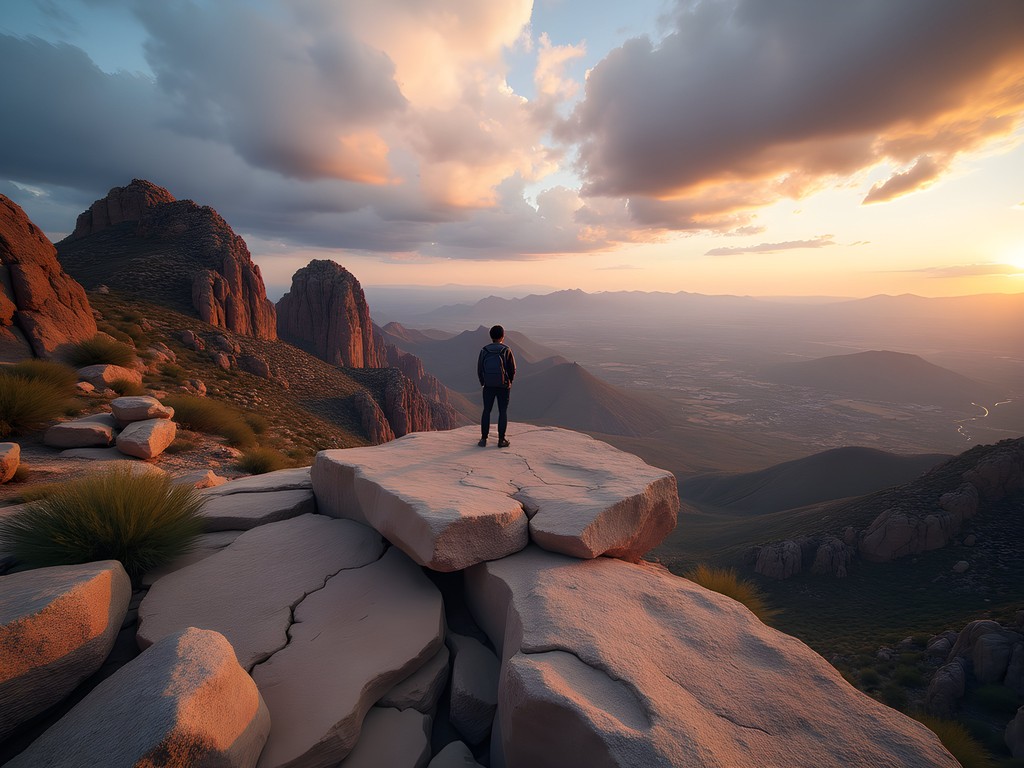
💡 Pro Tips
- Start no later than 7AM to avoid dangerous afternoon heat and potential thunderstorms
- Bring at least 3 liters of water per person – there are no water sources on the trail
- Allow 6-8 hours for the complete journey including rest stops
Final Thoughts
Mesa's desert trails offer more than just exercise – they provide a masterclass in natural organization, resilience, and efficiency. From the perfectly adapted plant communities to the geological processes that shaped these landscapes over millions of years, each hike tells a story of systems working in harmony. As a professional organizer who's constantly seeking balance between structure and flexibility, I find these desert landscapes to be profound teachers. Whether you have a single morning or an entire weekend, Mesa's trails can accommodate your schedule while delivering experiences that will recalibrate your perspective. I encourage you to approach these hikes with both preparation and openness – plan your routes, bring appropriate gear, but also allow yourself to be surprised by the desert's subtle wonders. The trails will be waiting for you, organized by nature's patient hand, ready to reveal their secrets one step at a time.
✨ Key Takeaways
- Start hikes early in the morning to avoid heat and crowds
- Each trail offers unique geological and botanical features worth taking time to observe
- Mesa's variety of trails accommodates different fitness levels and time constraints
📋 Practical Information
Best Time to Visit
October through April, with November being ideal
Budget Estimate
$20-50 per day (park fees, transportation, and supplies)
Recommended Duration
2-3 day weekend
Difficulty Level
Intermediate

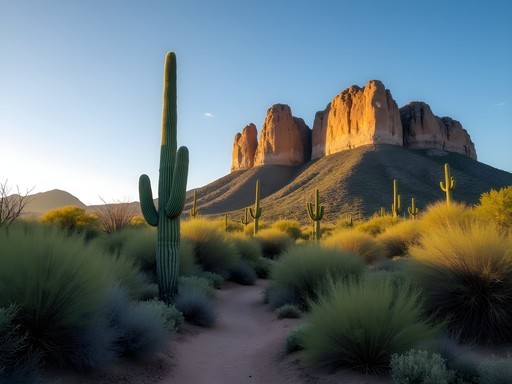

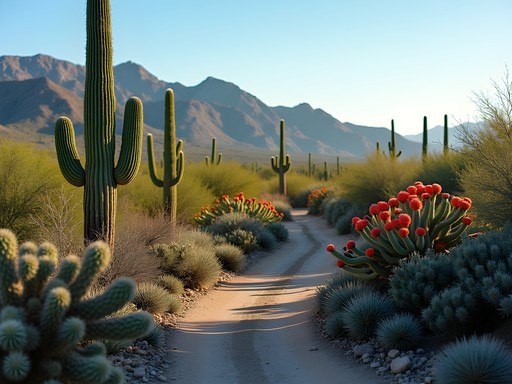
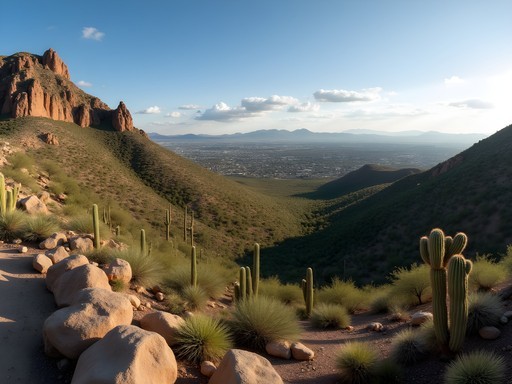
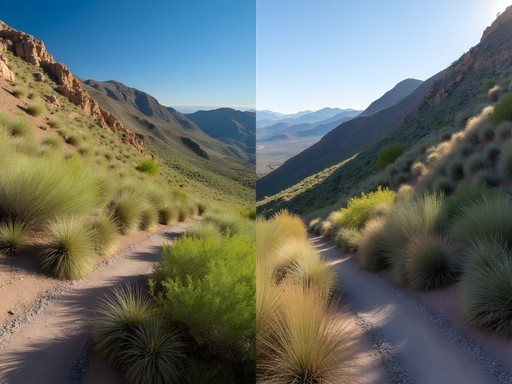











Comments
oceanseeker
Just got back from Mesa last weekend and hiked the Goldmine Trail! Your descriptions are spot-on Ashley - those saguaros really do look like they're posing for photos! One tip for anyone going: we started at sunrise and the light was absolutely magical. The whole desert glowed orange and the shadows created these amazing patterns. Saw a roadrunner and some jackrabbits too! Definitely one of the most beautiful hikes I've done this year. Can't believe I waited so long to explore desert landscapes!
sunsethero
Those sunset pics from Wind Cave Trail are incredible! 😍
dreamperson
Great post! How difficult would you say the Ridge Line Trail is? I'm a decent hiker but nothing extreme. Also, are there water refill stations at any of these trailheads? Planning a trip in October and trying to figure out how much water to bring. Thanks!
oceanseeker
Not the author, but I did Ridge Line last fall - it's moderate difficulty with some rocky sections. No water stations on Hawes trails that I found, so I brought my hydration pack filled to capacity and was glad I did. October should be nice though - not as brutal as summer!
dreamperson
Thanks for the insight! Will definitely pack extra water. Looking forward to those views!
Sage Dixon
Ashley, your post brought back so many memories! I hiked the Ridge Line Trail at Hawes last year during a road trip through the Southwest. The geometric patterns you mentioned in the cacti formations really are mesmerizing - I found myself stopping every few minutes just to appreciate the desert architecture. For anyone planning these hikes, I'd add that proper footwear is absolutely essential. I used my hiking boots which provided great grip on those loose gravel sections of Ridge Line. Also worth noting that cell service can be spotty in parts of Lost Dutchman, so downloading offline maps beforehand is a smart move. The contrast between the rugged mountains and the organized patterns of desert life is something that stays with you long after you've left Arizona. Can't wait to return and try San Tan Mountain next!
Savannah Torres
We took our kids (8 and 10) to Mesa last spring and did the Treasure Loop Trail at Lost Dutchman - it was perfect for a family adventure! The kids were completely mesmerized by the Superstition Mountain legends. We started early (7am) to beat the heat and packed plenty of water. The ranger at the visitor center was amazing with the kids, giving them a little scavenger hunt to spot different cacti. If you're traveling with little ones, I'd definitely recommend the Wind Cave Trail too - challenging enough to feel accomplished but not too strenuous for younger hikers. Just make sure everyone has proper sun protection - that Arizona sun is no joke! 🌵☀️
dreamperson
How was the heat in spring? Planning a family trip next April and wondering if it'll be too hot for my 6-year-old.
Savannah Torres
April was perfect! Mornings were cool (60s) and afternoons hit mid-80s. Just start early, carry lots of water, and you should be fine. My kids loved it!
coollife9632
These photos are STUNNING! Mesa just shot to the top of my hiking bucket list! 🏜️🥾
Savannah Torres
Right?! The way Ashley captured the light on those cacti is absolutely magical. Desert landscapes are so underrated!
coollife9632
Totally! I've always been a forest hiker but these trails are making me rethink everything!
exploremate
Great post! Which trail is best for beginners?
Sage Dixon
Wind Cave Trail is perfect for beginners! It's about 3.2 miles round trip with gradual elevation gain and clearly marked paths. The cave at the top provides nice shade for a break, and the views are spectacular without having to tackle anything too technical. Just bring plenty of water - I go through at least 2 liters on that trail even in cooler months!
exploremate
Thanks! Will definitely check it out next weekend.
wildlover
Just hiked Treasure Loop last weekend and it was AMAZING! The views of the Superstition Mountains are absolutely breathtaking, especially around sunset when everything turns golden. I'd recommend going early morning or late afternoon though - that Arizona sun is no joke, even in spring. We saw a family of quail and a roadrunner dart across the trail! Anyone else noticed how the desert blooms are starting earlier each year?
sunsethero
Was it crowded? Planning to go next month!
wildlover
Not too bad on weekdays but gets busy on weekends. If you go for sunrise, you'll practically have it to yourself!
skylegend
Are any of these trails good for seeing spring wildflowers? Thinking about a March trip next year.
smartlegend
March is perfect for desert wildflowers! Lost Dutchman was covered in poppies and lupines when I went last spring. Totally different experience than summer hiking.
Casey Andersson
Just finished a week exploring Mesa's trails and I'm absolutely smitten! The Treasure Loop Trail was magical at sunrise - we had the place practically to ourselves and watched the mountains turn pink and gold as the sun came up. I actually extended my stay by two days just to fit in more hikes from this list! One tip for international visitors like me: the desert heat is NO joke. Even in autumn, I was surprised how quickly dehydration can sneak up on you. Pack more water than you think necessary, wear a wide-brimmed hat, and reapply sunscreen constantly. The desert's beauty is worth it though - I've hiked all over the world but there's something uniquely spiritual about Arizona's landscapes.
Ashley Lawrence
So glad you enjoyed Mesa's trails, Casey! Your sunrise experience on Treasure Loop sounds perfect. You're absolutely right about the heat - desert hiking requires serious preparation, even for experienced hikers.
Venture X
Premium card with 2X miles, $300 travel credit, Priority Pass